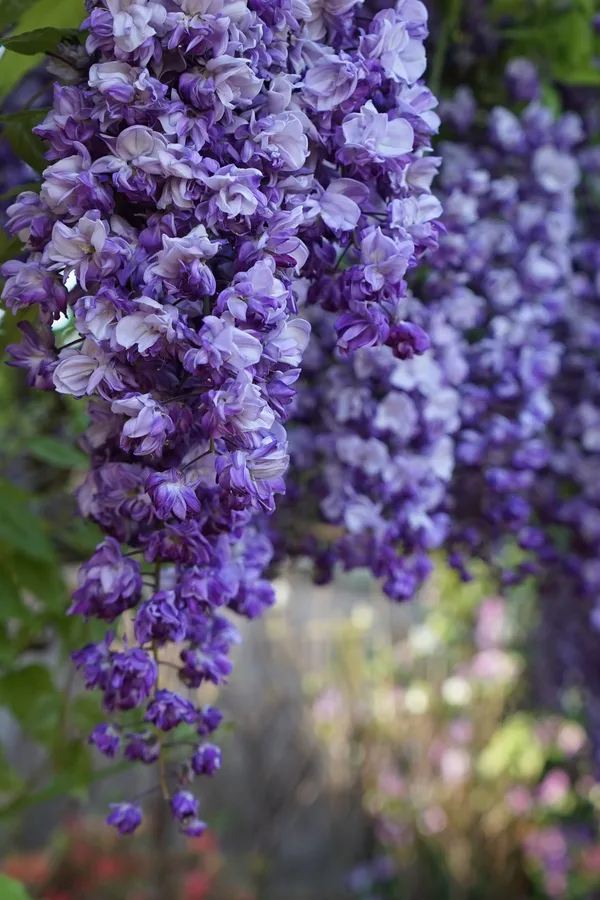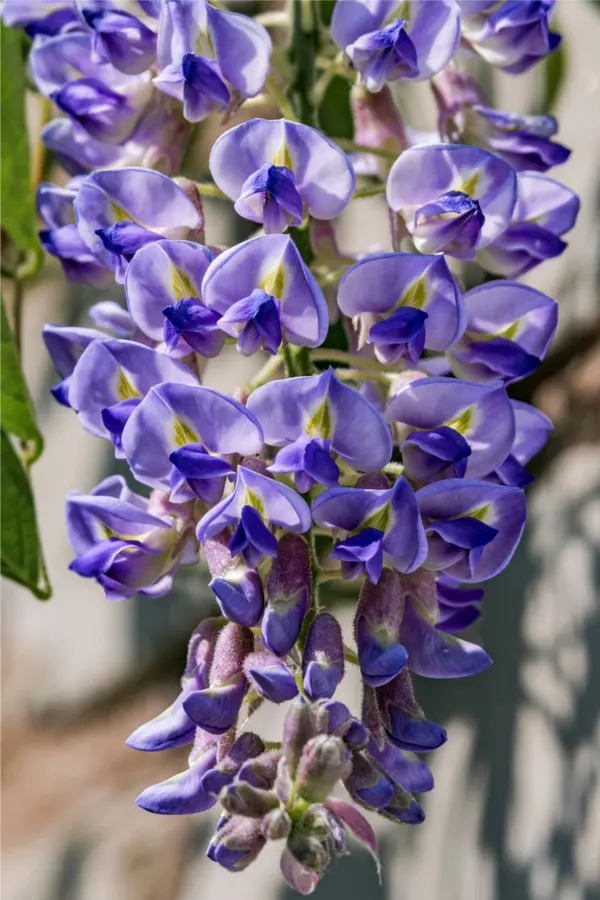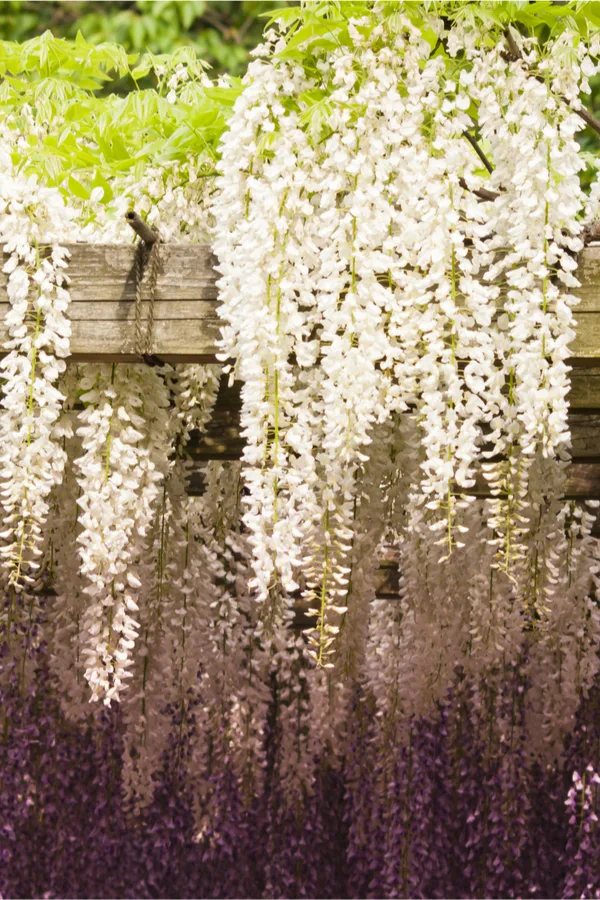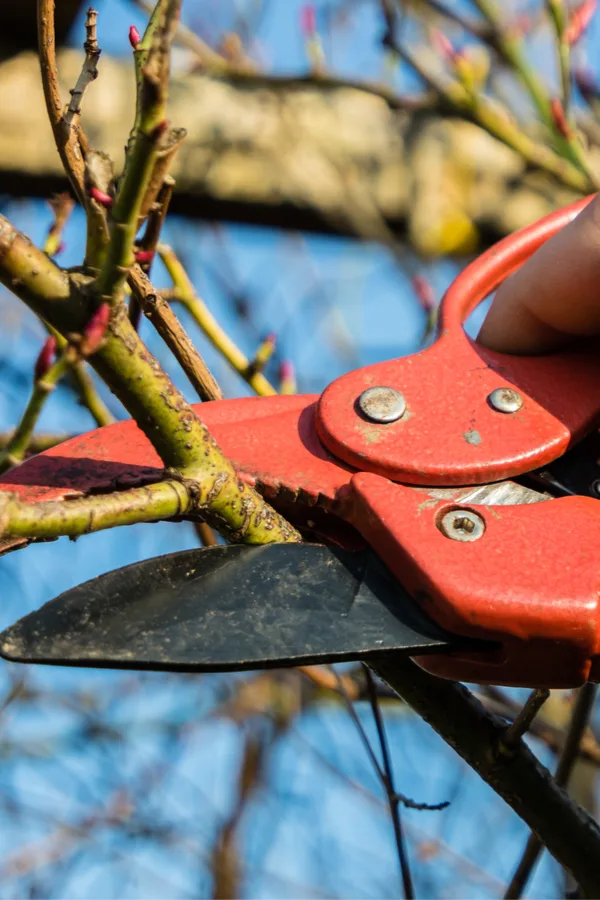If you are looking to add long-lasting climbing perennials to your landscape, you might want to plant and grow wisteria!
Wisteria is one of the sturdiest of all climbing perennials around. For centuries, it has been used to cover pavilions, pergolas, arbors and fences with its soaring foliage and long, flowering blooms. And can it ever grow big!
Depending on the variety, wisteria vines can grow to lengths of 30 feet or more. As they mature, the base of the vines develop into thick, twisting, woody stems that anchor the plant firmly to wherever they grow.

The canopy of foliage that wisteria produces can certainly be impressive as well. With proper support, it can nearly engulf a structure as its vines curl and twist every which way. But as beautiful as its leaves are, it is its massive, dangling blooms that steal the show early in the growing season.
Wisteria blooms are simply stunning to behold. With varieties that can bloom in white, pink, blue or purple, the flowers can reach lengths of ten inches or more.
Usually appearing in mid-spring in most climates, the elongated flowers can provide dazzling color for four weeks or more.
Selecting The Right Variety of Wisteria To Grow
Unfortunately, wisteria has the reputation as being a bit of an invasive plant. This is true when it comes to non-native varieties such as Japanese and Chinese wisteria, but not when planting native species.

When selecting your plants, look for Wisteria frutescens (often called American wisteria) or Wisteria macrostachya (Kentucky wisteria). Both of these varieties are native to North America. Because of that, they do not pose any issues when it comes to overtaking your landscape.
Selecting A Growing Site – How To Grow Wisteria
The key to growing wisteria successfully all starts with choosing the right location for planting. And that means finding an area that receives enough sunlight, but also having the proper support in place to handle the plant’s future growth.
Wisteria will struggle to bloom if it doesn’t receive enough daily exposure to the sun. For best results, plant in a location that receives at least 8 hours of full sunlight.
In addition, to grow to its full potential, wisteria needs to be able to support the weight of its vines as it grows. Without good support, vines will languish if they sprawl to the ground.
Understanding that wisteria vines grow to be strong and heavy, it is important to make sure the support you will be using can handle the plant’s future growth.

A flimsy arbor, plastic pergola or a weak fence will easily crumble under the weight and growth of wisteria. And if it does, the plant can be hard to retrain to a new structure. That is why early planning is such a key to success.
Whatever you do, plan for the long-term before planting. Wisteria vines can completely engulf an arbor or structure within 5 to 10 years. (See : How To Build A Long Lasting Pergola)
Planting – How To Grow Wisteria
Wisteria needs rich, fertile and well draining soil to reach its full potential. Prior to planting, amend the planting area with plenty of compost to build in nutrients and increase the soil’s fertility.
Although you can plant wisteria from seed, it is best to grow from transplants. Unfortunately, wisteria can take years to grow from a seed into an adult plant. In fact, it can 10 or more years in some cases to get your wisteria to bloom when growing from seed!

Select live plants in the 1 to 3 gallon pot size for best results. Dig your planting hole to a few inches deeper than the pot, and twice the diameter. Add a few inches of compost in the bottom of the hole and mix with the existing soil. Plant Link: Amethyst Falls Wisteria – 1 Gallon Pot
Place the plant into the hole so that the crown of the plant is level or just slightly above the surrounding soil. Back fill with the soil, adding a bit of compost as you do.
Wisteria roots can rot when too much moisture is present in the soil. A ratio of 4 parts soil to 1 part compost for the back fill will provide enough nutrients to the soil without allowing it to hold to much moisture in.
Fertilizing & Pruning – How To Grow Wisteria
Wisteria does not require a lot of additional power to produce its gorgeous blooms. With that said, the perennial can benefit from a light fertilizer application each spring to power early growth and promote better blooming habits.
The key to success when fertilizing is to keep the nutrients balanced and in low and slow doses. An all-purpose granular fertilizer in the 4-4-4 to 10-10-10 range works well. Apply early in the spring, just before or as the plant is beginning to leaf out.
Pruning – How To Grow Wisteria
Wintertime is the best time to prune your wisteria. You can prune in very late winter or even in early spring as long as the plant has not come out of dormancy.

When pruning, concentrate on removing half to three-quarters of the previous years growth. This will keep the plant’s growth manageable, healthy and strong. If you have an existing oversized plant, you can remove more to get it under control. Just remember, severe pruning will most likely delay blooms for a year.
After wisteria blooms, it will usually send out a whole slew of tiny shoots. These can be trimmed back in mid summer to keep the plant under control.
As for fall pruning, it should be avoided. Pruning late in the season will promote late growth that is easily damaged from the cold and snow of winter.
For other climbing perennial plants for your landscape, check out our article : The Best Climbing Perennials To Plant For Big, Sprawling Flower Power! Here is to adding soaring beauty to your landscape this year!
This Is My Garden is a website dedicated to spreading the love and knowledge of gardening around the world. We publish two new garden articles each week. This article may contain affiliate links.

